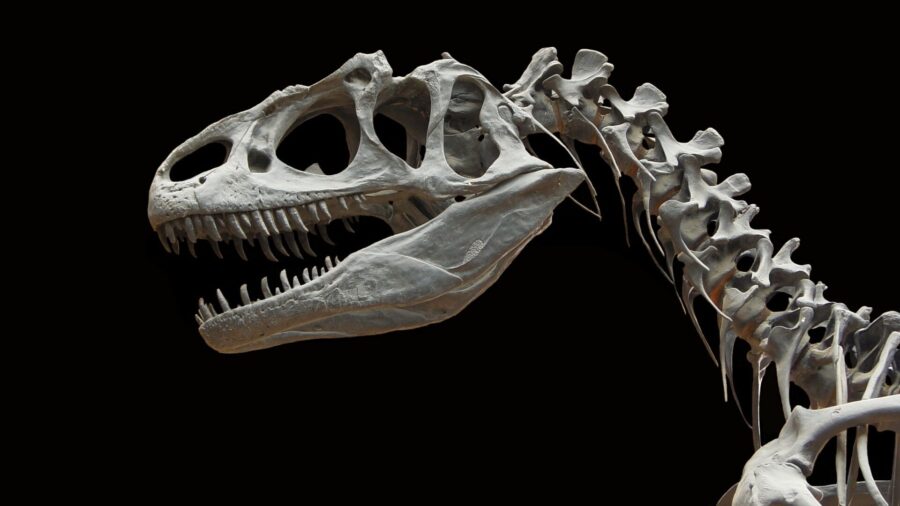A 76 Million-Year-Old Dinosaur Skeleton Is Being Auctioned Off
Skeletons always find a way.
This article is more than 2 years old

Heads up Nicolas Cage (or anyone else who can afford dino bones), because Sotheby’s is auctioning off a Gorgosaurus skeleton in New York on July 28. The Gorgosaurus is a close relative of the T. Rex that roamed what is now the US and Canada. The predator was alive over 76 million years ago, during the Late Cretaceous Period.
If you’re wanting to get your hands on this dinosaur skeleton, you’re definitely going to need some Nic Cage-level money. Sotheby’s is predicting that the skeleton will go for anywhere between $5 to $8 million at the auction. This particular Gorgosaurus specimen was discovered in 2018. It was uncovered in the Judith River Formation near Havre, Montana. While it’s not quite as mighty as its Tyrant Lizard cousin, it’s still a formidable 10 feet tall and 22 feet long. This is also the first time that a Gorgosaurus has been offered at auction, so it’s quite the rare specimen if you’re someone who can afford to collect it.
If you want to check out the Gorgosaurus skeleton before it hits auction, you can see the dinosaur in person at Sotheby’s York Avenue galleries in New York. There’s always a chance that the buyer will donate it to a museum, but if a private buyer decides to keep it for themselves, it might be the last chance you get to check it out. This wouldn’t be the first time Sotheby’s auctioned off a high-profile dino skeleton. Perhaps the most famous of their dinosaur sales was in 1997 when they auctioned off the most complete and well-preserved T. Rex skeleton known as Sue. Sue was purchased for $8.36 million and can be seen on display at the Chicago Field Museum. Sue was born quite a few years after the Gorgosaurus, as she roamed the Earth roughly 67 million years ago. Sue also nearly doubles the length of the Gorgosaurus, measuring roughly 42 feet from snout to tail.
While the Gorgosaurus auction seems like it will be fairly straightforward, the custody of Sue was fraught with a bit more controversy and back-and-forth between interested parties. Sue was found in 1990 in South Dakota by Susan Hendrickson, the paleontologist and marine archeologist whom Sue was named after. The complications stem from the fact that Sue was found on the property of ranch-owner Maurice Williams. Hendrickson had surveyed the property with Peter Larson, who paid Williams $5,000 for permission to excavate the dinosaur skeleton after it was found. Sue then had her ownership called into question, since Williams was ¼ Native American and his land was held by a US government trust for tax purposes. Williams alleged that he gave Larson the right to search the property, not excavate. The sale also required consent from the US Department of the Interior due to the trust. Eventually, the skeleton was seized by federal agents, before a district court ruled Sue was the property of the trust in 1993. In 1994, the Supreme Court confirmed this ruling, and William and the Bureau of Indian Affairs assumed ownership. The BIA gave Williams to sell the fossil at auction and now Sue lives in Chicago. Hopefully, the Gorgosaurus sale will be a little less tumultuous.











